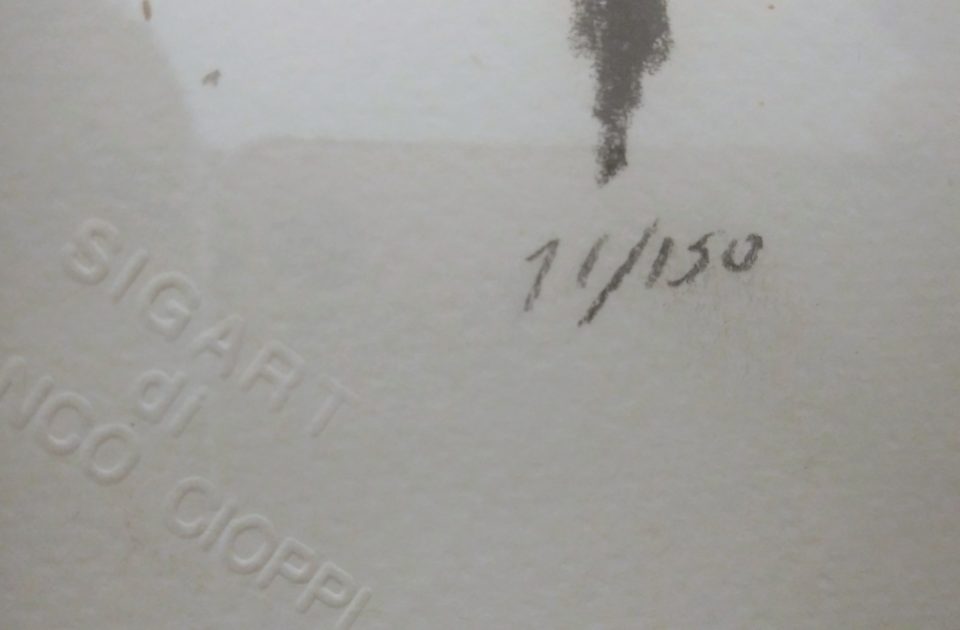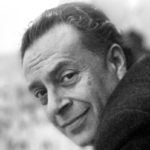Renato Guttuso was born in Bagheria, Sicily, on December 26, 1911 (but his mother reported him to the registry office on January 2, 1912).
Of his childhood Guttuso himself writes… “among the watercolors of my father, the studio of Domenico Quattrociocchi, and the workshop of the wagon painter Emilio Murdolo took shape my street I was six, seven, ten years old…”.
In 1928 he participated in his first group exhibition in Palermo, but since he was 13 years old he signed his paintings painted on wooden boards of which he uses the grain of wood as a decorative element.
From his first paintings Renato Guttuso, fundamentally verist and naturalist, pursues a purely figurative execution of themes anchored to the rural, rural, popular world: social themes or overtly political subjects.
While attending high school in Palermo he spent his free time in the workshop of the Futurist Pippo Rizzo, taking the opportunity to broaden his vision of painting, approaching the Futurist movement and the plasticism of “Novecento”.
Renato Guttuso’s style detached itself from his father’s pictorial model to arrive, already at the end of the Twenties, at a brilliant and luminous pictorial form, with harsh and contrasting tones.
In 1930 he enrolled in the Faculty of Law, which he abandoned after his success at the Quadriennale di Roma.
In 1933 he wrote an enthusiastic article on Pablo Picasso, the Spanish artist who would be the main stylistic and moral model for his entire life, for the daily newspaper “L’Ora” in Palermo.
Following his path the painter moved to Rome in 1937, where he met his future wife Mimise, and forged bonds of friendship with the artists of the “Roman school”.
Guttuso became the most eloquent spokesman for a young generation of artists who had developed a growing aversion to the politics and cultural fashions of the fascist regime already in the years before the war.
Young artists expressed in newspapers and through their works, opinions on creative freedom and the moral imperative of realism.
At the same time Guttuso illustrates his ideals in a series of large works, starting with “Esecuzione in campagna” of 1938-39, dedicated to Federico Garcia Lorca, “Fuga dall’Etna” of 1940 and “Crocifissione” of 1941.
Having left Rome for political reasons in 1943, Renato Guttuso took refuge in Quarto (Genoa), returning to the capital the following year to participate in the Resistance.
The protagonists of the exhibition “L’arte contro la barbarie”, organized by “L’Unità”, exhibited drawings on the atrocities of the war, published in the album “Gott mit Uns – God is with us”, motto engraved on the buckles of German soldiers, of 1945.
In the feverish postwar years, participates in the ideological discussion between figurative and abstract painters.
In various articles on “Vie Nuove”, “L’Unità” and “Rinascita”, Renato Guttuso argues in favor of a descriptive realism that he considers popular and accessible to the masses and stylistically follows the first period of Pablo Picasso, the so-called “Blue”.
Although he cannot deny the affinities with Soviet socialist realism, Guttuso maintains that his artistic ideology stems from deeply felt convictions and is not imposed by any political system.
During the fifties the painter is the main exponent of a “realist” current, politically committed alongside the P.C.I. often polemically struggling with the “formalist” tendencies of much abstract art.
Guttuso, who will never betray his personal “campaign of ideas”, executes works that realistically propose the European situation.
In 1968, he went to Paris where he portrayed young people in the first protest marches in what would become in time the legendary “French May”.
Since 1969 he has been living permanently in Rome, in the famous Via Margutta, the street of painters, with his companion Marta Marzotto, the splendid Countess ex mondina and model.
It ‘s the intimate period of the artist who begins a series of paintings purely autobiographical.
Often the polemical spirit emerges overwhelmingly in Guttuso reaching its peak with the large canvas “I funerali di Togliatti” of 1972, a manifesto work of antifascism.
Guttuso is a painter who despite belonging to an era full of changes, social and cultural, living them as a protagonist, does not change his figurative style, always remaining the painter enlightened by his land.
In his mature years, Guttuso continued to paint great frescoes of contemporary events, often with markedly allegorical tones, images of autobiographical and peasant inspiration, politically connoted.
Among the most famous Italian artists abroad, Guttuso has obtained numerous prestigious exhibitions, including a retrospective at the Puskin Museum in Moscow and the Hermitage in Leningrad.
He taught painting at the Academy of Fine Arts in Rome and was Visiting Professor at the Hochschule fur Bildende Kunste in Hamburg.
Appointed Senator of the Republic in 1976, he died in Rome on January 18, 1987 leaving to his hometown many works that are collected in the museum of Villa Cattolica in Bagheria.




